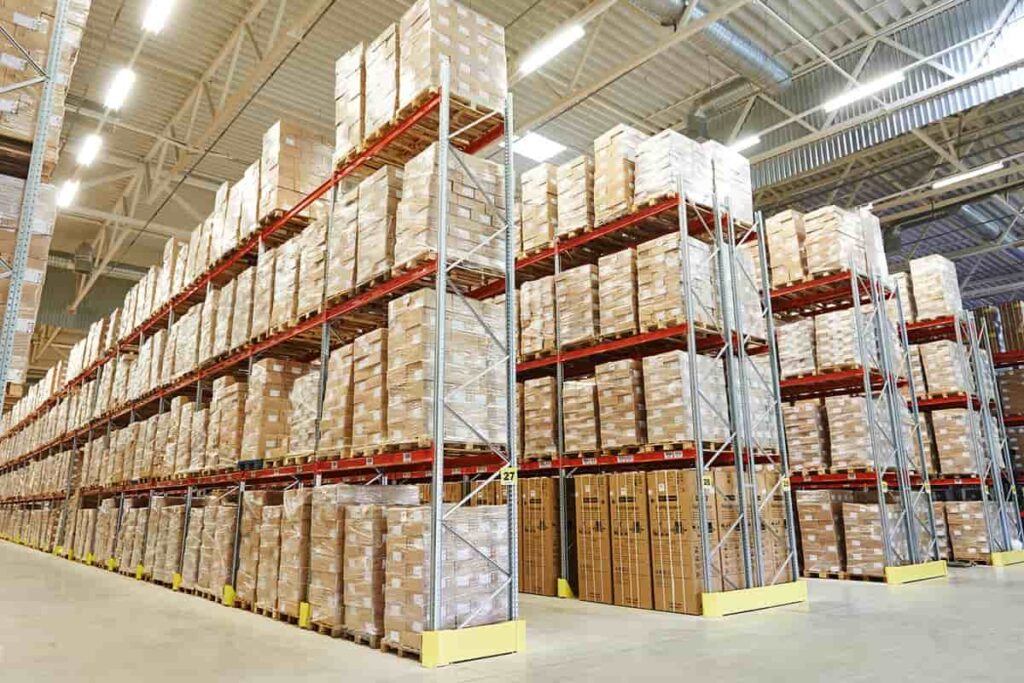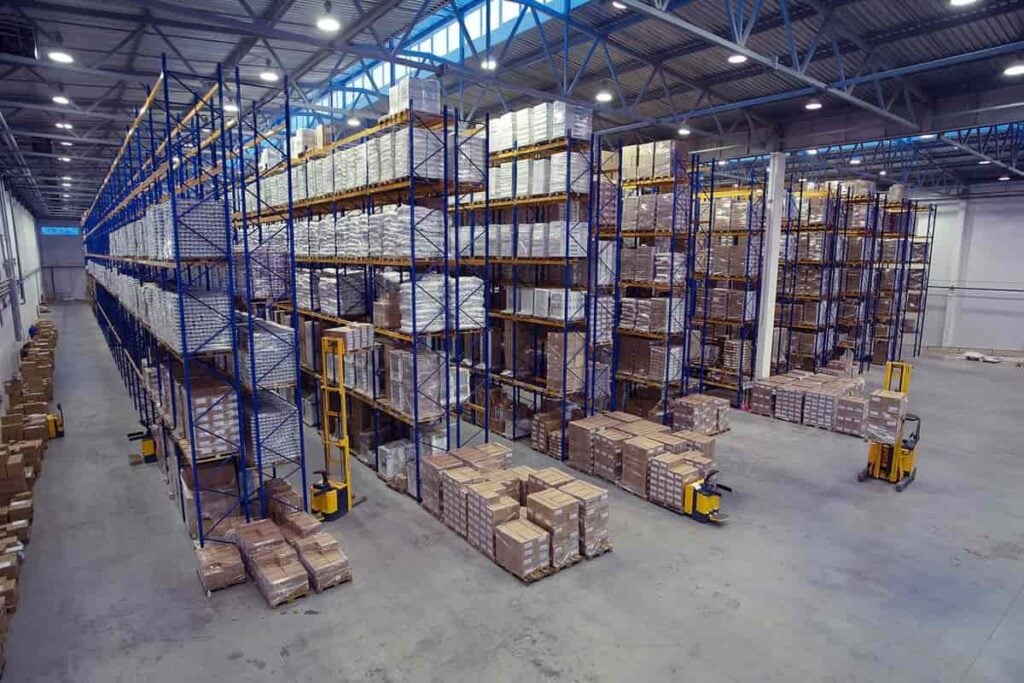Why Walmart is Embracing AI and Robotics
Table of contents

One of the most famous bonehead quotes from a chief executive who brushed off technological disruption came from Blockbuster CEO Jim Keyes in 2008. He said, “Neither Redbox nor Netflix are even on the radar screen in terms of competition.” Two years later, Blockbuster filed for bankruptcy and Keyes got a job stocking DVDs in Redbox machines. We might have made up one of those two stories, but there’s no denying the fact that businesses that don’t evolve, don’t survive. The malls of the United States are emptying faster than your bowels after eating from one-too-many sketchy-looking taco stands in Mexico City, with vacancy rates expected to hit up to 25% in a couple of years.

While we can blame it all on the nearly trillion-dollar behemoth known as Amazon (AMZN), some big-box retailers simply didn’t innovate fast enough. That’s NOT been the case for the world’s largest brick-and-mortar retailer, Walmart (WMT).
Walmart: A Dividend Growth Champion
While Amazon does rank higher than Walmart on Forbes’ Global 2000 list of the world’s biggest public companies as of last year, the former’s real value resides in its cloud services, which account for more than half of its overall profit, rather than its retail prowess. Walmart is still the retail champion when it comes to overall revenue. In the third quarter of 2019, for instance, the retailer earned about $128 billion versus about $70 billion for Amazon.
However, the latter usually gets all the buzz thanks to its streaming services, drone delivery army (that’s losing to UPS), cashierless stores, robotic warehouses, and a certain Dr. Evil-looking CEO.

Tech is disruptive AND sexy, and it’s hard to have sex appeal in a Walmart vest. But what should be extremely attractive to retail investors is the fact that Walmart has increased its annual cash dividend every year since it wrote its first dividend check way, way back in March 1974.

As you can see in the above chart, dividend growth has slowed for Walmart since about 2014. If you want to know why Walmart is embracing technologies like AI and robotics, it’s because they need to decrease costs which will increase profits and allow them to continue increasing their dividend. Here’s a look at just how much their dividend growth has slowed in the past five years.

In the past five years, that growth hasn’t even kept up with inflation.
Walmart Embraces AI and Robotics
Regular readers know that while we love to write about emerging technologies, we’re generally loathe to put too many chips into such a high-risk game. Our preferred strategy is dividend growth investing (DGI), an approach that emphasizes a diverse portfolio of 30 dividend-paying stocks with well-established histories. In fact, we first introduced our lovely readers to this concept in an article that highlighted how low-tech Walmart was making investments in artificial intelligence and related technologies. In effect, what was a value-priced stock with little of the volatility found in the tech sector was making serious capital investments like a growth stock would. Around the same time, we also wrote about how the retail giant was testing shelf-scanning robots to manage inventory.
Fast-forward about two years, and it’s obvious that Walmart is betting its blue chips and future on many of the same technologies that Amazon has championed, including robots, AI, and drone delivery. We’re happy for Walmart to be making investments today that will ensure our dividends continue growing for decades, hopefully at a rate that exceeds inflation, so that our living standards can increase over time.
Walmart’s Robot Army
Walmart is the world’s largest private employer, with about 2.2 million associates around the world. It’s only a matter of time before many of them are released to do other value-added tasks, such as campaigning for universal basic income once automation puts them out of a job. That’s because last year the company announced it would be adding thousands of robots to its stores, from floor-cleaning robots to a robotic unloader that pulls boxes from delivery trucks and automatically scans and sorts products. More recently, Walmart announced it would add more shelf-scanning robots to an additional 650 U.S. stores, bringing the total number of locations where Dalek-like sentries straight out of Dr. Who patrol the aisles in order to enslave feral children to alert the few remaining employees about toothpaste shortages.
Shelf-Scanning Robots


The metal monsters machines also sport more than a dozen cameras with new capabilities, such as the ability to scan produce, and all the while vacuuming up data to feed analytics on customer-buying behavior and other business intelligence. Bloomberg reported that the shelf-scanners can reduce tasks that once took as long as two weeks into a twice-daily routine.

Warehouse Robots
Walmart is also developing its own robotic warehousing system to support its fast-growing online grocery business, which experienced a 41% jump in growth in the third quarter of 2019. The company now has more than 3,100 grocery pickup locations and more than 1,600 same-day grocery delivery locations, so it’s up to the robots from Alert Innovation to keep up.


The company says the design, which features things like a drive mechanism that uses vertical tracks to move up and down like an elevator, makes the robotic system simpler and cheaper to build. It also uses supercapacitors instead of chemical batteries to store energy for powering the bots, which can be recharged as they climb and descend through the warehouse’s vertical towers.
Last-Mile Delivery Robots


The services will use R2, Nuro’s custom-built electric-powered delivery vehicle that carries only products with no onboard driver or passengers, and autonomous Toyota Priuses, all powered by the company’s self-driving software and hardware.
Update 11/02/2021: Nuro has raised $600 million in Series D funding to focus on commercializing and scaling the production of a third-generation vehicle at their new facility. This brings the company’s total funding to $2.1 billion to date.
The Walmart AI Lab
Most of Walmart’s push into automation obviously relies on third-party vendors, but the company is also developing its own AI factory. Dubbed the Intelligent Retail Lab (IRL), the new portfolio company from Store Nº8, Walmart’s incubation arm, has retrofitted a 50,000-square-foot Walmart store with cameras, sensors, and other state-of-the-art hardware to figure out what works and what doesn’t using AI in retail. For example, some products are designed to track and restock items, while others detect the ripeness of produce, and still others help expedite the checkout process by alerting associates to open more registers during the zombie apocalypse known as Black Friday.

IRL is also testing a whole range of different sensor types, including everything from RGB cameras to depth-sensing cameras, employing the usual AI technologies like computer vision, machine learning, and sensor fusion. The whole operation is powered by its own supercomputer that is capable of processing 1.6TB of raw images per second, which is the equivalent of about three years’ worth of music each second.
Conclusion
Walmart investors have been receiving a dividend increase for 46 years in a row now. However, those increases are slowing as Walmart prudently decides to make investments now that will reduce costs, consequently increasing profits, ensuring that they can continue growing their dividend for years to come. When looking at our portfolio of DGI stocks, there is an expectation that all companies are adopting technologies like AI and robotics to increase revenues and decrease costs. Not doing so means that companies won’t be able to compete, net income won’t grow, and our dividends won’t be growing either. Walmart is embracing AI and robotics as a matter of survival, and it’s comforting to see that progress continues to be made as more technologies get rolled out across more stores.
Sign up to our newsletter to get more of our great research delivered straight to your inbox!
Nanalyze Weekly includes useful insights written by our team of underpaid MBAs, research on new disruptive technology stocks flying under the radar, and summaries of our recent research. Always 100% free.














